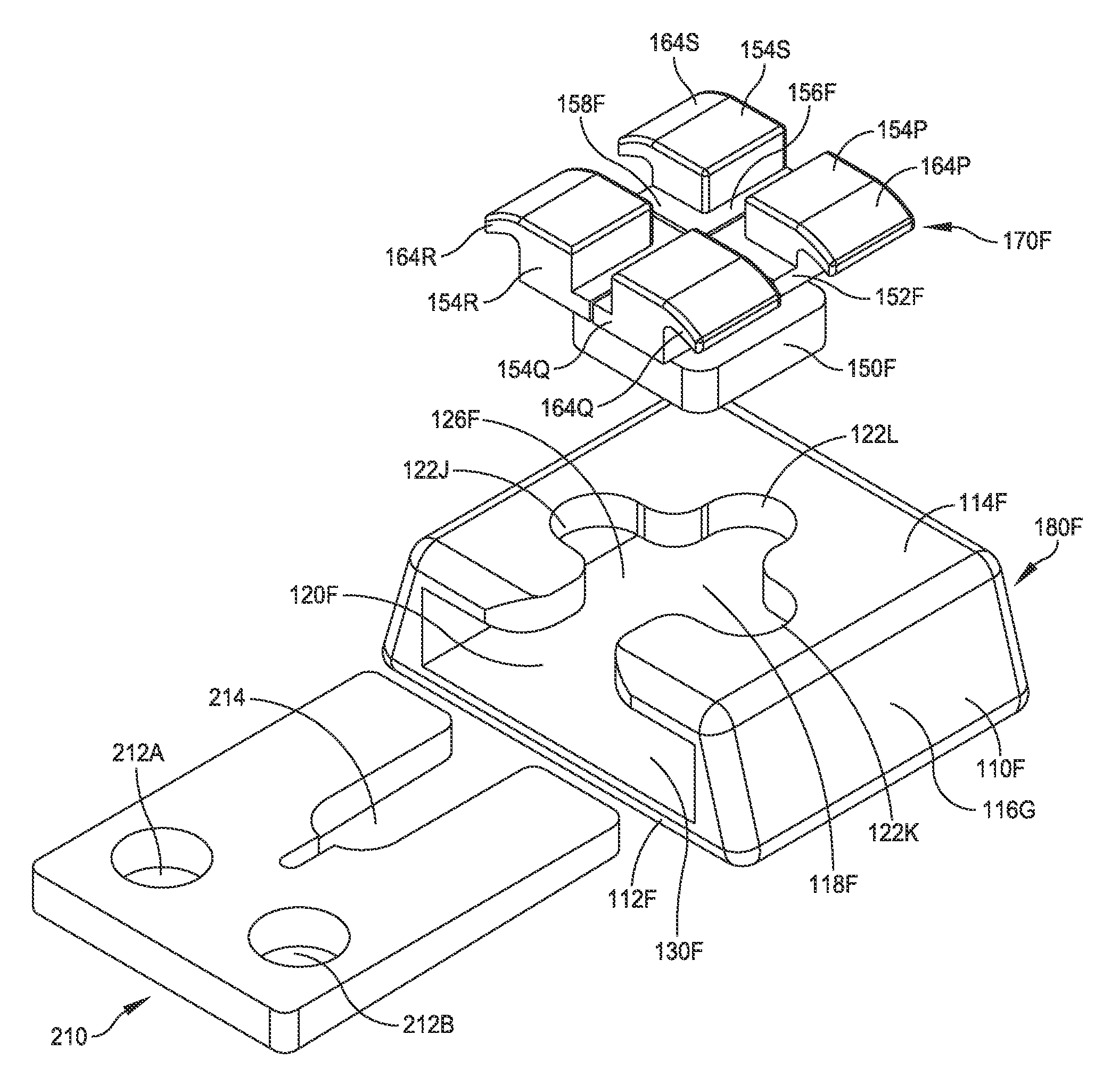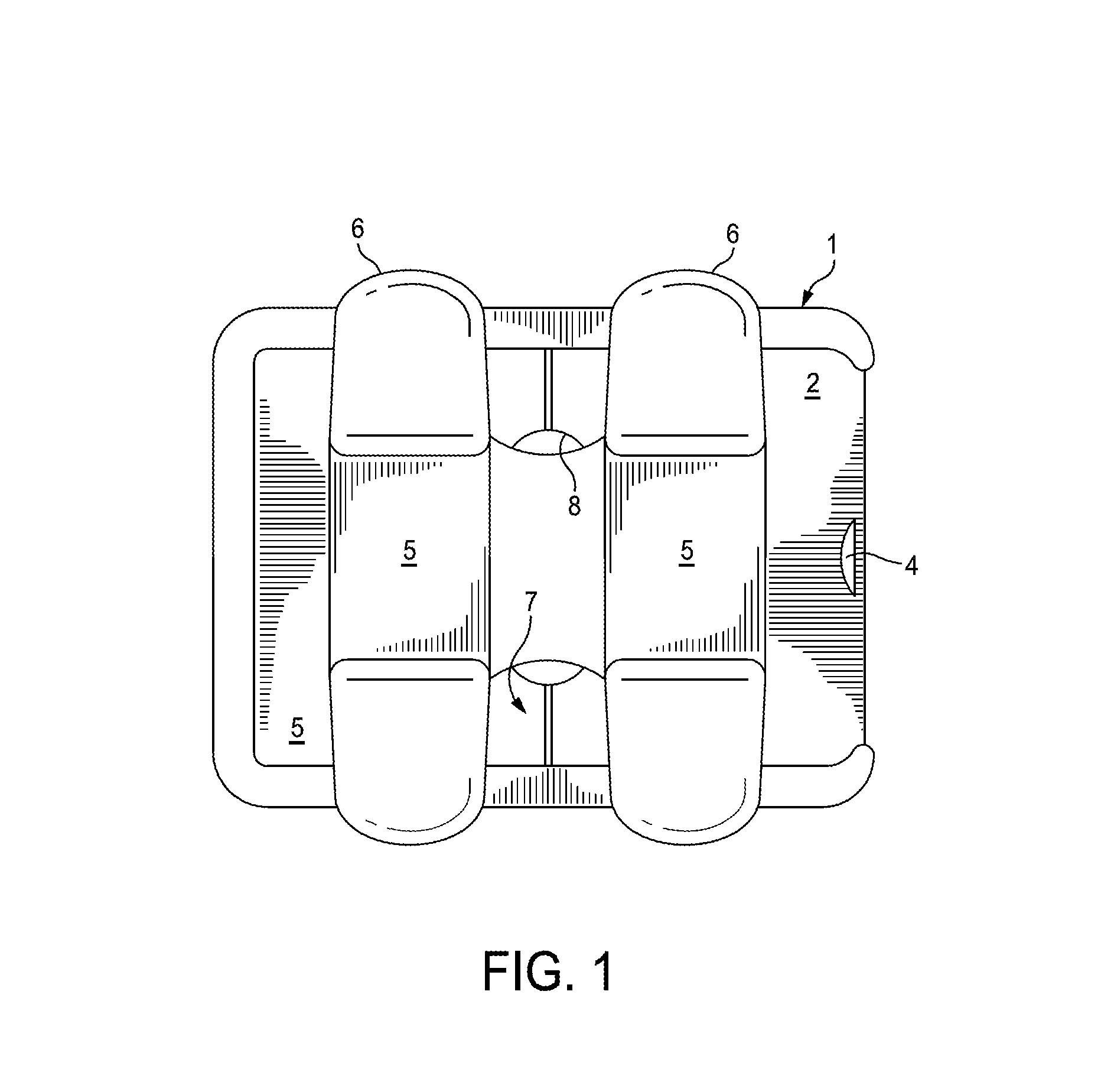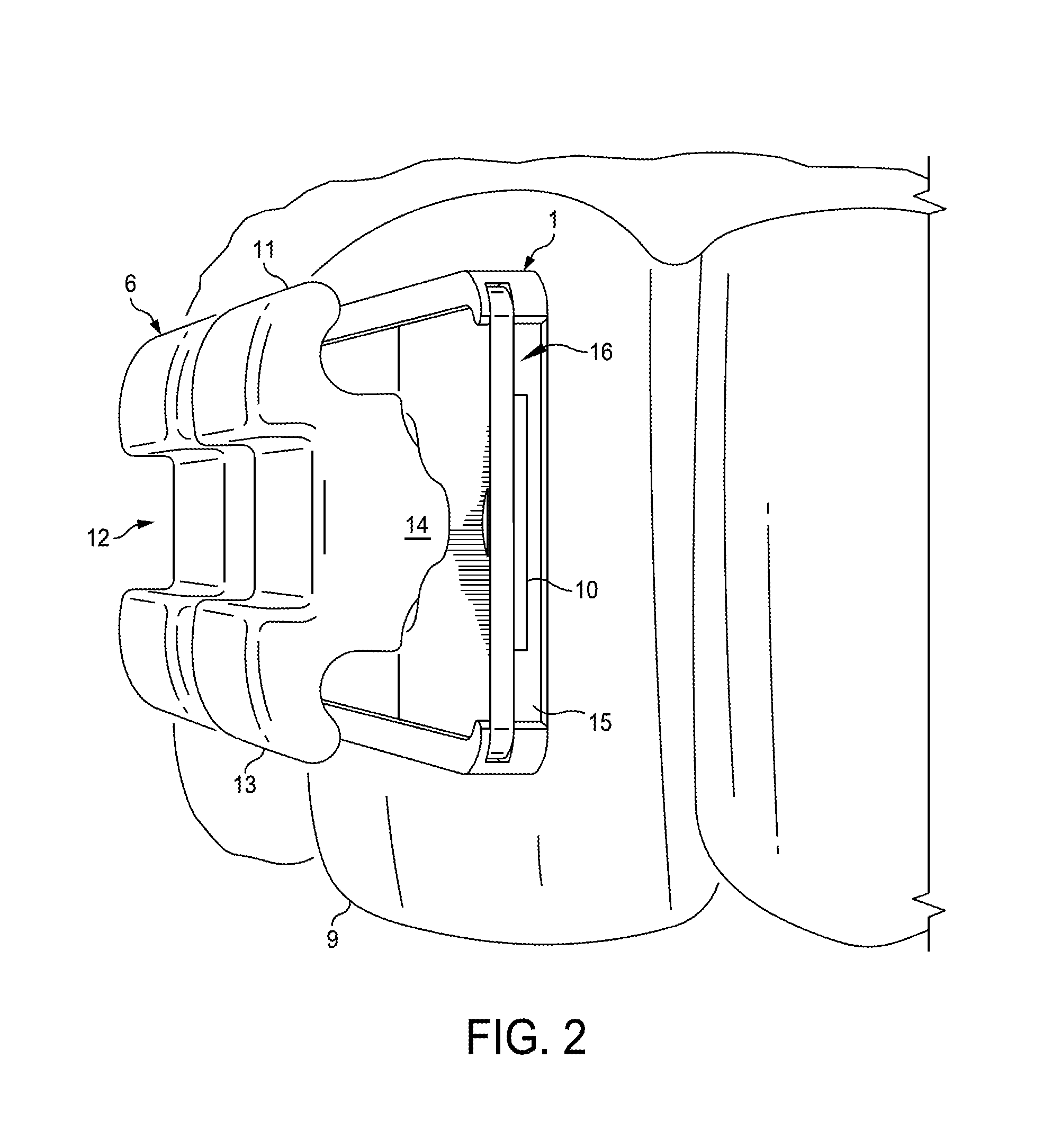Dynamic bracket system
a bracket system and dynamic technology, applied in the direction of brackets, etc., can solve the problems of misalignment of teeth, inability to achieve optimal tooth angulation and position, so as to improve efficiency and quality of patient care, the effect of convenient modification of the position, tip and torque of the bracket slot componen
- Summary
- Abstract
- Description
- Claims
- Application Information
AI Technical Summary
Benefits of technology
Problems solved by technology
Method used
Image
Examples
Embodiment Construction
[0050]A description of preferred embodiments of the invention follows.
[0051]FIG. 1 is a top view of an embodiment of the dynamic bracket system. The shown dynamic bracket system is composed of a bracket system frame (1) which is connected to the tooth surface (9) (not shown in FIG. 1 but shown in FIG. 2). The interior of the shown frame has grooves or guiding lines (17) for the insertion of the stationary cover and moving cover. See FIG. 4. The moving cover (2) is inserted after the stationary cover (3) into the frame such that the covers connect at a junction (7). The connected covers exert a vertical pressure on the bracket base (10) that helps secure the base inside the bracket compartment (16). The moving cover (2) has a releasing notch (4) into which an orthodontic plier or tool can be inserted in order to release the moving cover from the frame (1). Once the stationary cover (3) is in place within the frame, the bracket slot component (6) is inserted followed by another bracke...
PUM
 Login to View More
Login to View More Abstract
Description
Claims
Application Information
 Login to View More
Login to View More - R&D
- Intellectual Property
- Life Sciences
- Materials
- Tech Scout
- Unparalleled Data Quality
- Higher Quality Content
- 60% Fewer Hallucinations
Browse by: Latest US Patents, China's latest patents, Technical Efficacy Thesaurus, Application Domain, Technology Topic, Popular Technical Reports.
© 2025 PatSnap. All rights reserved.Legal|Privacy policy|Modern Slavery Act Transparency Statement|Sitemap|About US| Contact US: help@patsnap.com



